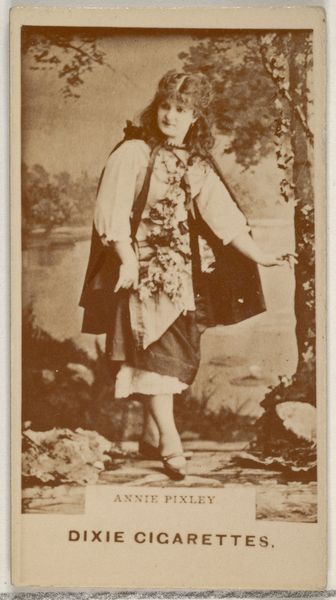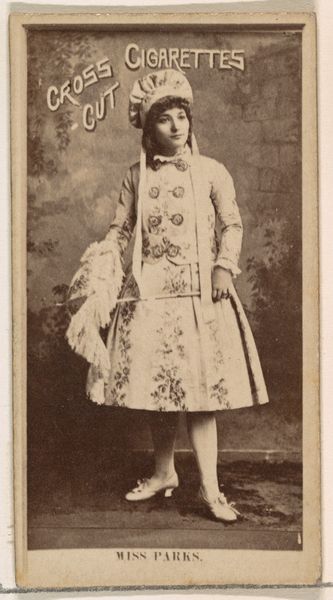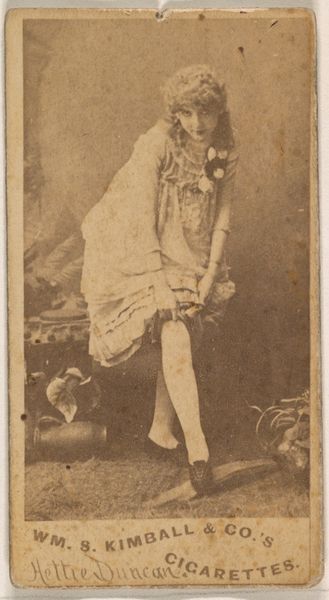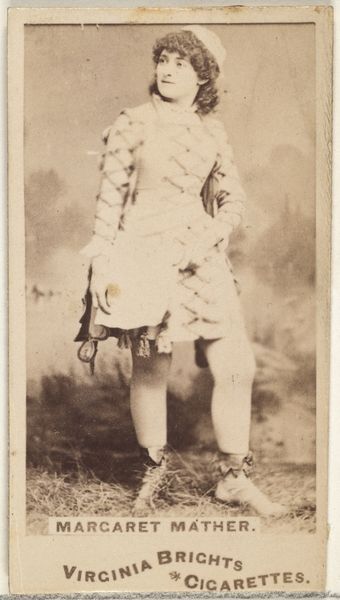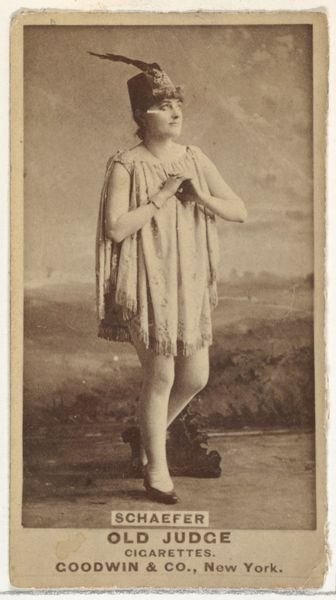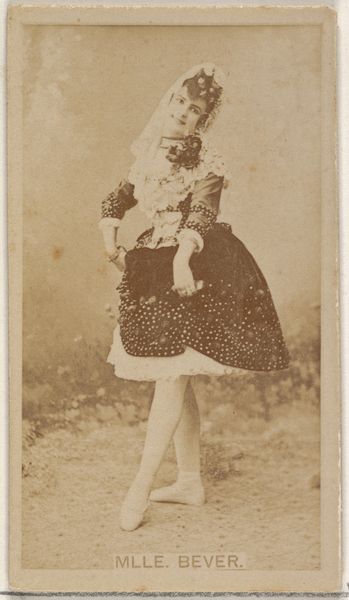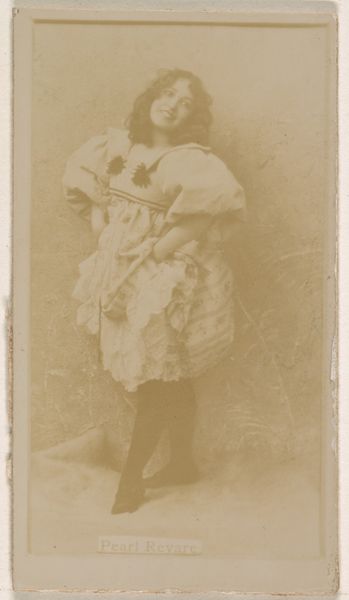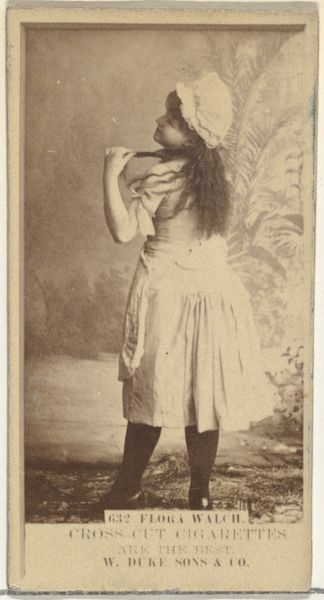
Minnie Maddern, from the Actors and Actresses series (N45, Type 1) for Virginia Brights Cigarettes 1885 - 1891
0:00
0:00
drawing, print, photography, albumen-print
#
portrait
#
drawing
#
16_19th-century
# print
#
photography
#
coloured pencil
#
19th century
#
genre-painting
#
albumen-print
Dimensions: Sheet: 2 3/4 x 1 3/8 in. (7 x 3.5 cm)
Copyright: Public Domain
Editor: This is "Minnie Maddern," a photograph from around 1885, part of the "Actors and Actresses" series by Allen & Ginter for Virginia Brights Cigarettes. It’s charming, but I can’t help but wonder, why use actresses to sell cigarettes? What's the message? Curator: Excellent question! These cards reveal a lot about 19th-century social dynamics. Consider the rise of celebrity culture intersecting with a rapidly expanding consumer market. Actresses like Minnie Maddern represented ideals of beauty and sophistication. Cigarette companies aimed to transfer those associations to their products, subtly aligning smoking with aspiration and glamour. But let's also think critically about the objectification of women – were their images being used without proper compensation or control? Editor: That makes sense, associating a product with a desirable image. Were these collectible cards aimed specifically at a male audience, reinforcing a particular kind of masculine identity through the act of collecting and consuming images of women? Curator: Absolutely. We should consider how these images function within a patriarchal framework. Collecting these cards provided a vicarious connection to the theater world and its stars, potentially fulfilling a fantasy of access and control. The cigarette companies, therefore, didn't just sell cigarettes, they sold fantasies and social standing, all intertwined with the commodification of female figures. Did Maddern, or other women, get any say in how their image was deployed and consumed? What was their perspective? These questions push us to look beyond the surface. Editor: I hadn't thought about the power dynamics involved in image production and distribution like that before. It's disturbing to realize how these everyday objects were part of a larger system that objectified women. Curator: Exactly. By analyzing such images, we begin to challenge historical narratives and unearth the often-silenced stories of the women involved, offering a crucial perspective on gender, representation, and consumer culture in the 19th century.
Comments
No comments
Be the first to comment and join the conversation on the ultimate creative platform.
